|
LOCATION LOCATION
Located on the hills of the
northwestern part that flank the town and surrounded by farmland are the
Villafáfila wineries.
There are two areas facing, a
short distance from the town, two deep scars in the land through which
the paths of Santovenia run. The landscape shows us the Bodegas Bajas or
the Bodegas de Abajo, as we call them to distinguish them from the other
area that goes back to this on the way La Barca naming them as Bodegas
Altas or Bodegas de Arriba, in considerable number.
They are located on the plot
concentration map of Villafáfila:
Bodegas Bajas or Las de Abajo in
polygon 3, plot 5233, on both sides of the Santovenia road.
Bodegas Altas or Las de Arriba in
polygon 3, plot 5334 to the left of the road, plot 5335 to the right,
from the Barca road.
|
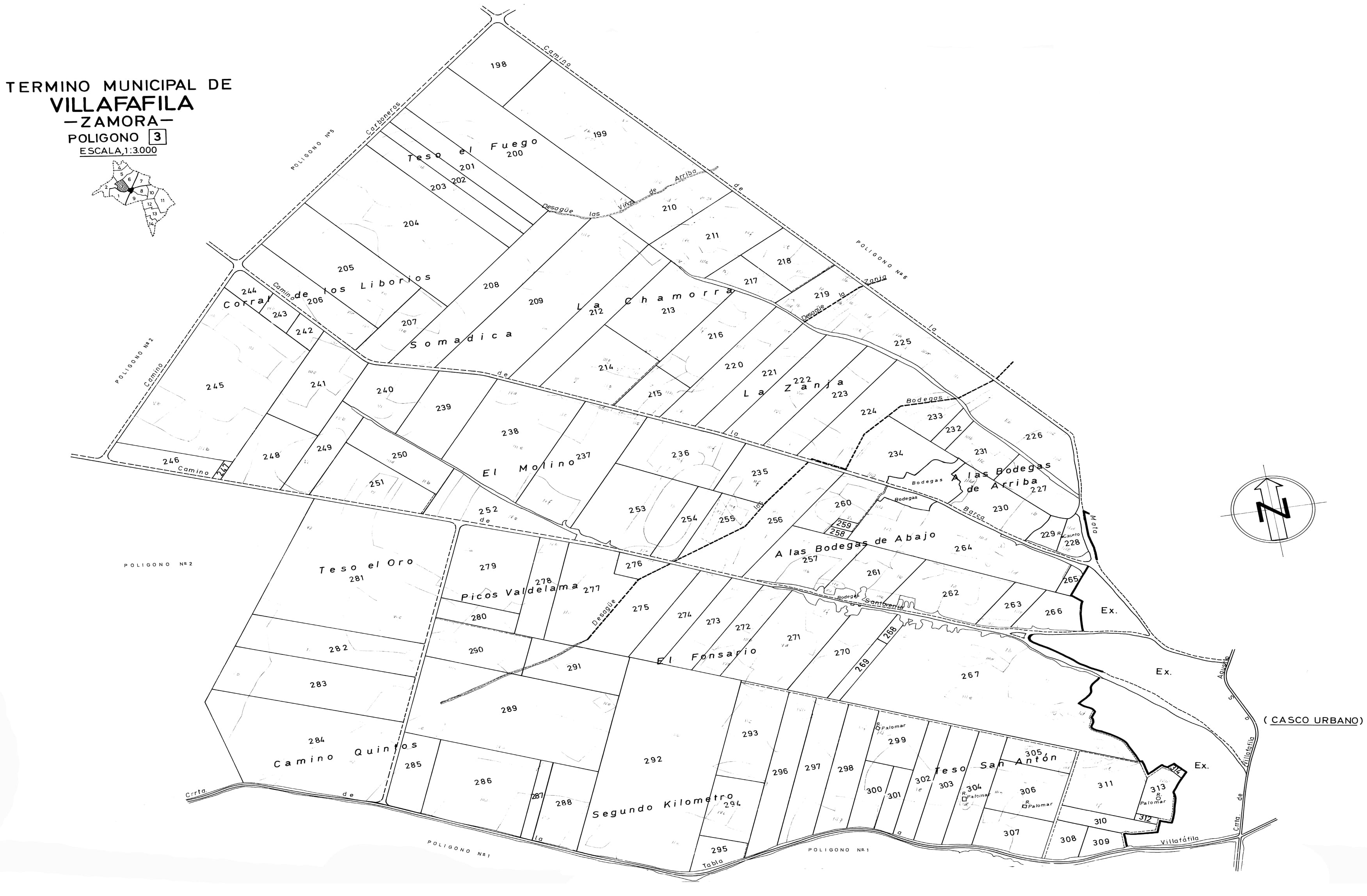
Map of plot concentration
of Villafáfila, polygon 3 |
|
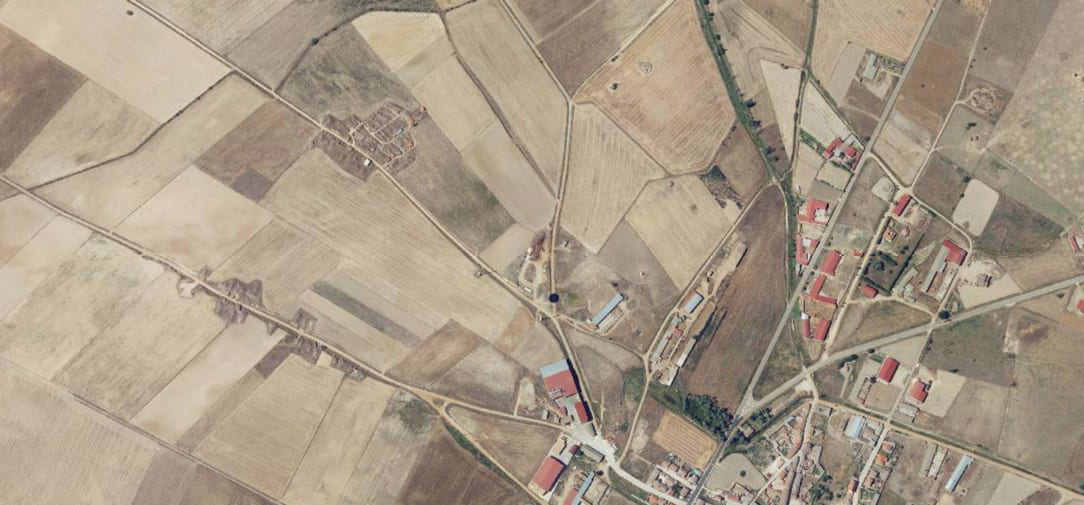
Low and High Cellars area
aerial view |
The Bodegas Bajas are currently
approx. 550 m from the town center and from the nearest house, they are
located on both sides of the Santovenia road, which divides them in two.
Latitude: 41°51'07.1"N
Longitude: 5°37'31.1"W
Left side:
Chained length of warehouses
approx. 377m
perimeter approx. 787 m.
surface approx. 7664 m 2 .
Surrounded by farms number 267,
268, 270 and 271.
Right side:
Chained length of warehouses
approx. of 228 m.
perimeter approx. 592m
surface approx. 5784 m 2 .
Surrounded by farms 257, 261 and
262.
|
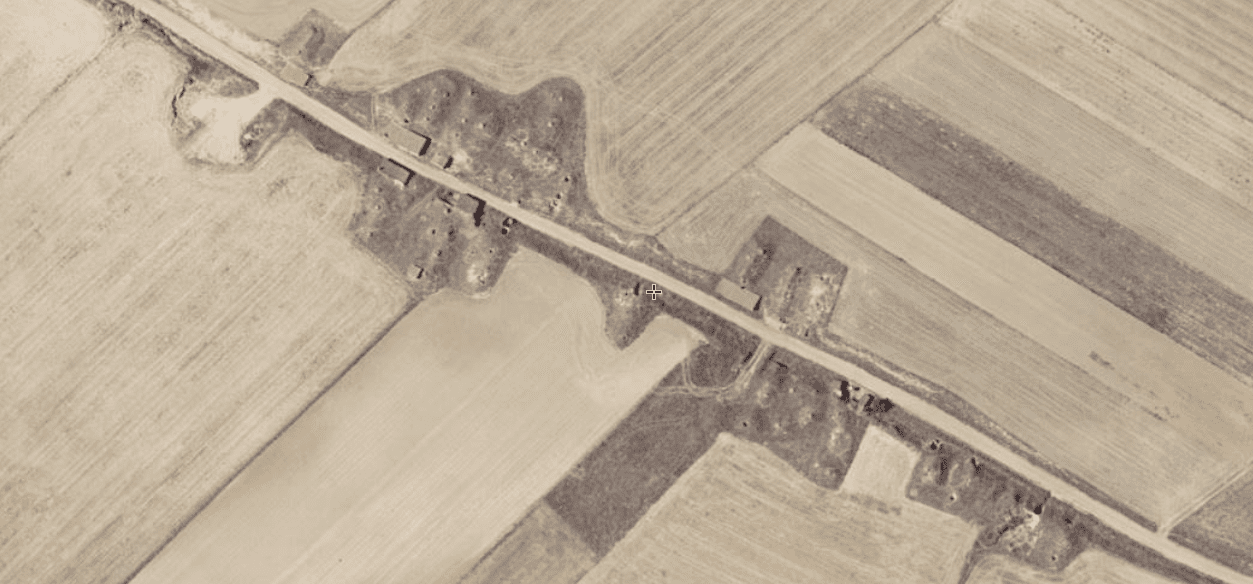
Low cellars area,
Santovenia road, left and right side aerial view |
|
The Bodegas Altas are approx. 728
m from the town center and the nearest house, divided into two parts by
the La Barca path.
Left side:
Chained length of warehouses
approx. 118m
surface approx. 4816 m 2 .
perimeter approx. of 347 m.
Surrounded by farms 260 and 264.
Right side:
Chained length of warehouses
approx. of 154 m, which is introduced towards the interior the longest
width is approx. 132 m, and consists of several streets.
surface approx. 1.30 ha.
perimeter approx. of 554 m.
Surrounded by farms 231, 232 and
234.
|
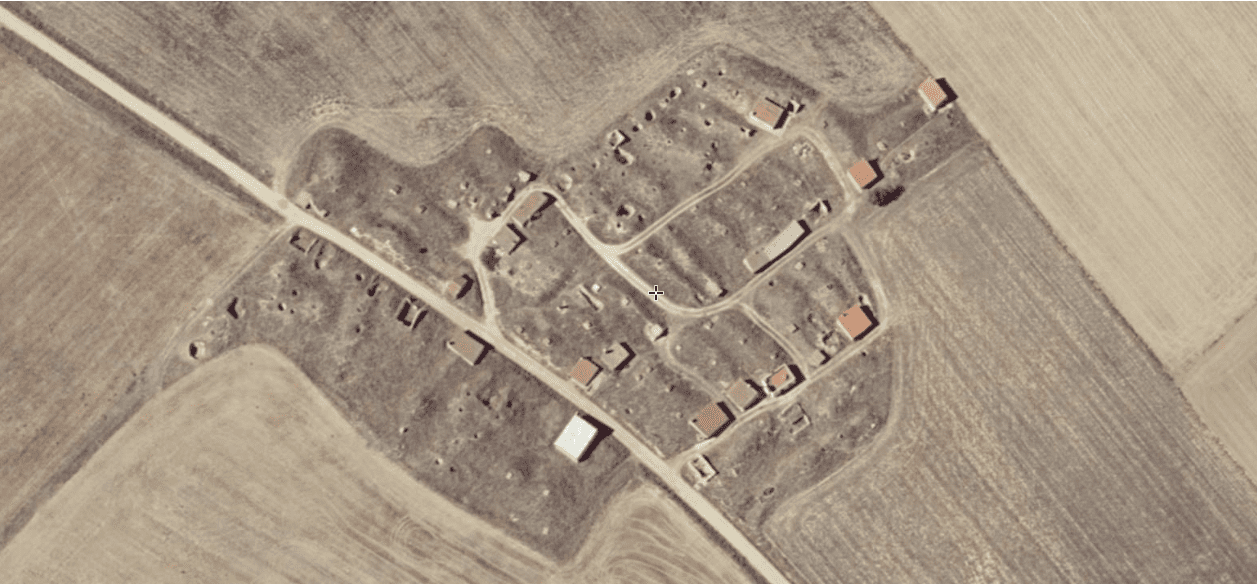
Bodegas Altas area, Camino
la Barca, left and right side, aerial view |
|
Its zarceras welcome you on days
of heat wave or winter wind. The song of the larks, cucuyatas and other
variety of birds, gives the place the magic that I have not forgotten
since my childhood.
|
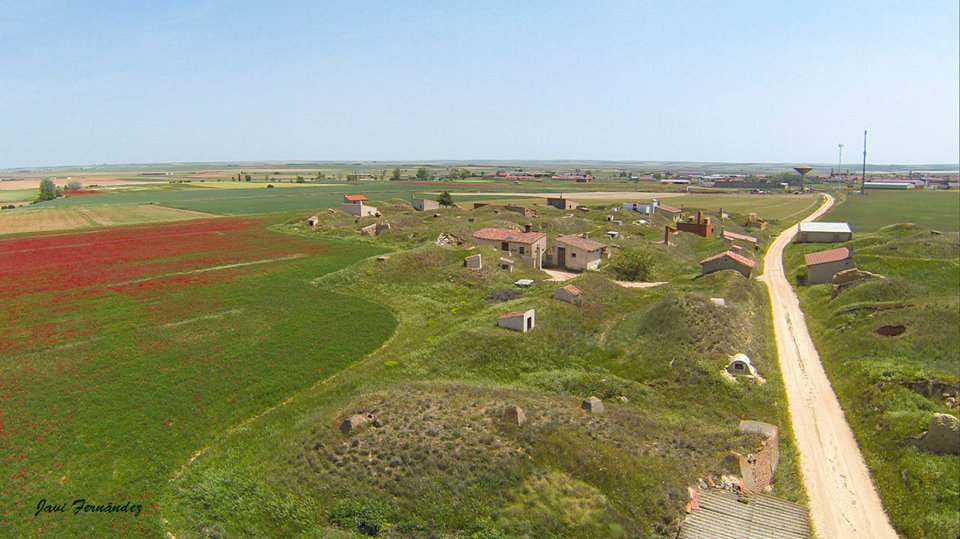
Bodegas Altas across the
path la Barca |
What seasoned hunter or seasoned
shepherd has not accounted for his food during the time off, in his
shelter or shade, with his gaze lost in the horizon, like a cadril,
until the lunch box is empty and the wine bottle is crushed? At night
they appear phantasmagorical, when you approach silence and peace calms
you. Sometimes broken by the hoot of the owl or the owl without breaking
the magic. When you turn the key, the creak of the hinges of the old and
heavy door invites you to lower the slope of the canyon, your whole
being awakens the senses, the change in temperature and the aroma of the
cellar announces that, in the depth , his belly guards the most precious
gift of Bacchus, the morapium. Silence and almost absolute darkness, the
pupils dilate and you begin to have an idea of the magnitude. Again
curiosity and impatience are reflected in those who are not used to this
experience. The jug, let's try this year's! The hemp of the faucet
growls, from the navel of the vat the jet gushes out, forming a foam
ring in Talavera's. The backlights of the lamp give way to a click of
the tongue. The essence of the strain returns to the palate.
POPULAR ARCHITECTURE
Taking advantage of clay soils ,
excavation with the tools of the time was less painful.
The beginning does not have a
defined norm. According to the master's criteria, it could be started by
the cannon or by the different zarceras, depending on the workforce
available. Its completion was long since they took advantage of the
downtime of the different times of the year when the tasks of the field
finished or the weather did not allow work on it.
The raison d'être of the winery is
its favorable condition for wine conservation, due to the constant
temperature, 14-15 degrees ,
which is maintained
throughout the year with slight fluctuations, resulting dry in winter
and cool in summer .
CONSTRUCTION SYSTEM
In the traditional system of
cellar construction, first a vertical cut is made in the hillside to
teso, which will then allow the construction of the entrance excavating
horizontally. Then, advancing
from top to bottom ,
the first zarcera or ventilation hole is excavated, advancing from there
horizontally, until completing the floor of the cellar, gradually
opening the remaining aeration zarceras in a variable number depending
on the extension of that one. .
|
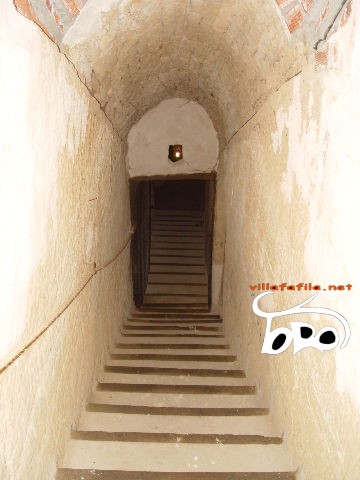
Canyon |
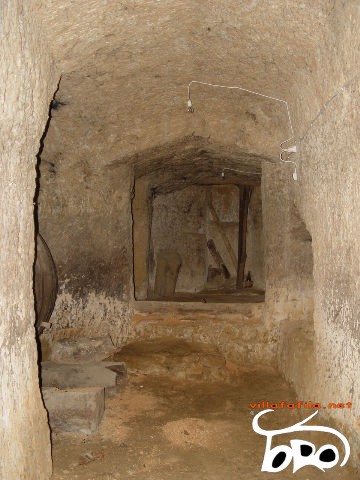
interior
of the cellar |
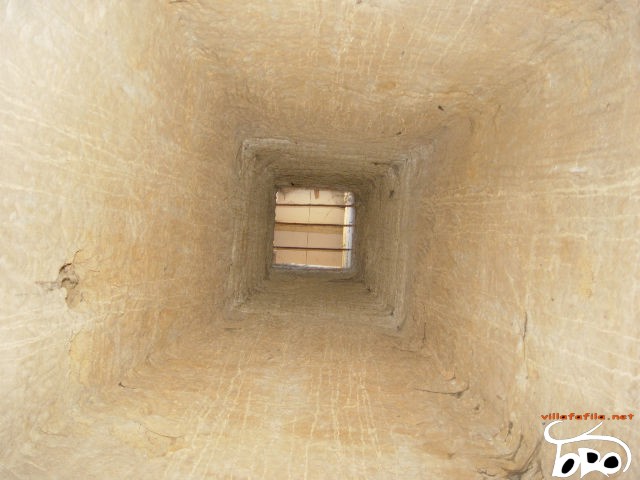
Zarcera |
They were made with pick and
shovel, removing
the earth in baskets and pots with
the help of a rudimentary wooden lathe that later gave way to the double
pulley. The
secret of the construction lies in the ease of working the clay at the
beginning, contrasting with the hardness that it acquires on contact
with the air.
The extracted earth was poured on
the same cellar on the outside , for
protection, so that by forming a trestle it made the rainwater drain, avoiding
leaks. Sometimes grass "pellas" or "grasses" were added on top to
facilitate this operation. Following the text and as an anecdote, the
mole of León did not manage to tear down the cathedral, it is obvious
that I do not intend to compare the magnitude of the work, in a winery
the mole plant is its Achilles heel. If the leak is not stopped in time,
the problems are served.
|
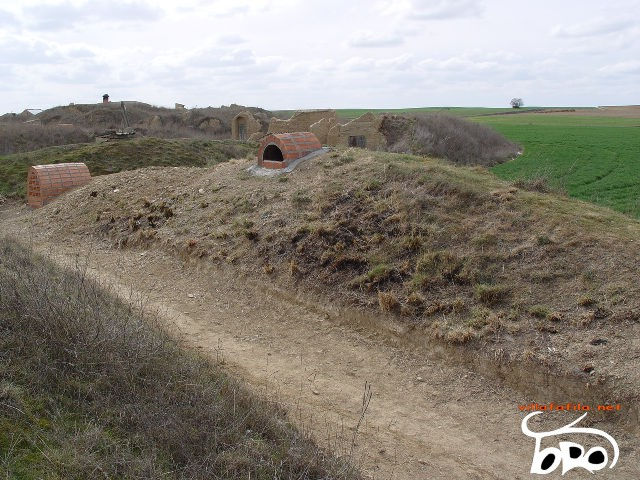
Exterior
of the cellar with its covered brambles |
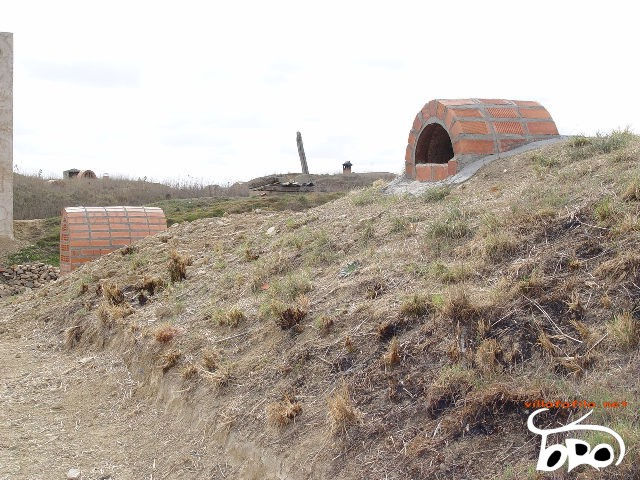
exterior
of the warehouse |
| |
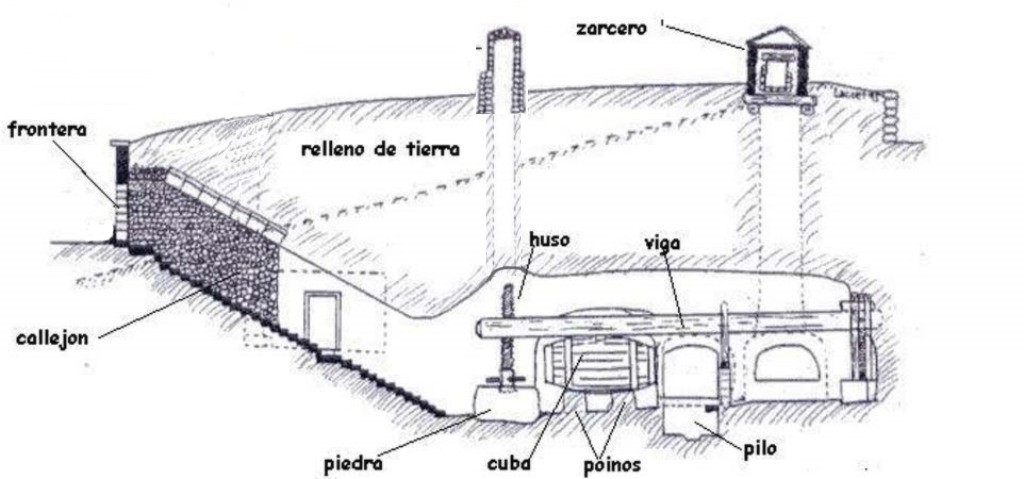
Sketch of a winery |
STRUCTURE
The underground cellars consist of a
vestibule "house" in
which the entrance door opens . Next,
comes the vaulted
and narrow “cannon” part that descends towards the main room of the
cellar, with niches on both sides, "sisas" , for
the placement of the vats and at the bottom with the "lagar" adjoining
the "pilo". ”.
The main room is usually irregular
in shape and is about 10 meters deep. The cellar is simply excavated in
the clay, in the form of slightly pointed vaults, without any additional
reinforcement. The
floor is usually made of trodden earth except in the area of the wine
press, which is tiled.
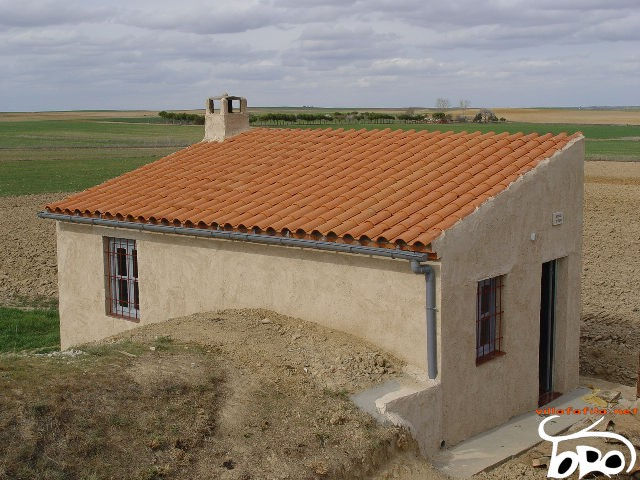
Newly restored shed |
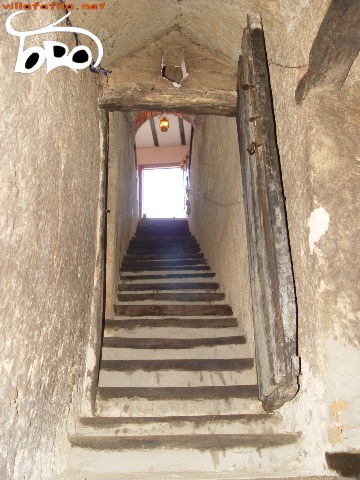
canyon with its stairs |
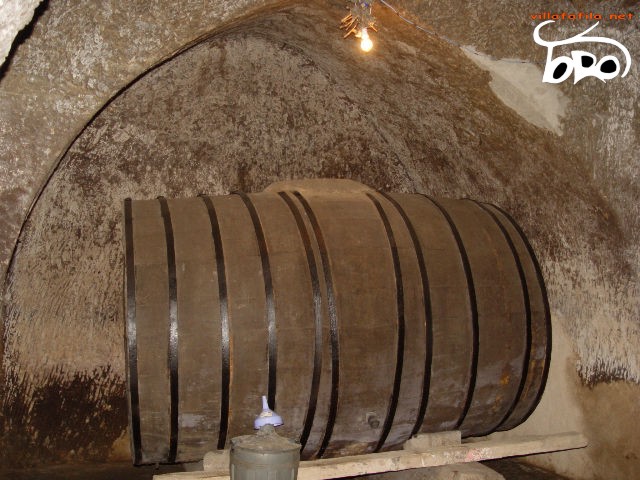
Carral |
The number of "zarceras" or
aeration chimneys define the importance of the cellars.
One of them, the largest, is
located over the winepress, and during the harvest, the grapes that are
collected in wicker baskets called “talegas” are placed there. The
zarceras are made of "adobe" (mud and straw) and have a pyramidal trunk
section that widens as it goes deeper.
The winery is located at the back
of the cellar, its floor is covered with tiles or stone barges and has a
large square shape, being separated from the rest of the cellar by a
retaining wall, which forms the deposit. The press communicates through
a "gutter" with the "pilo" or "lagareta", where the must falls.
|
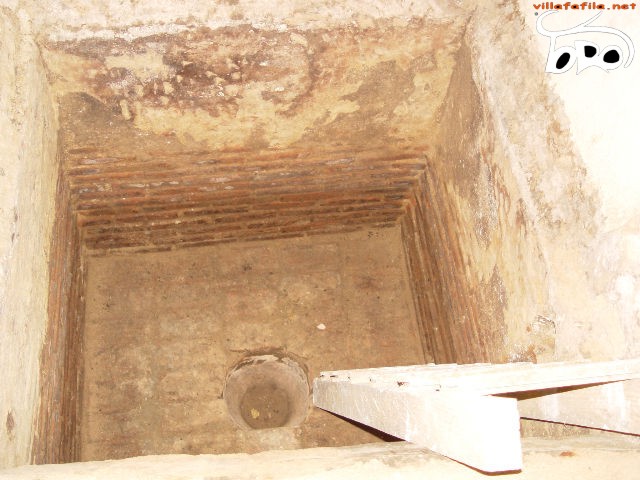
pile |
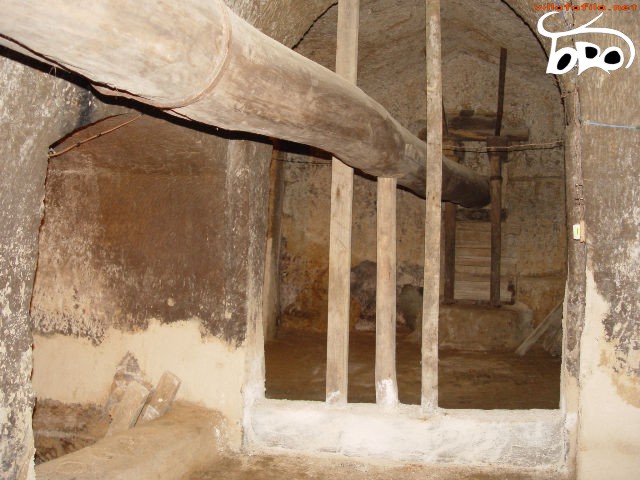
Beam |
| |
|
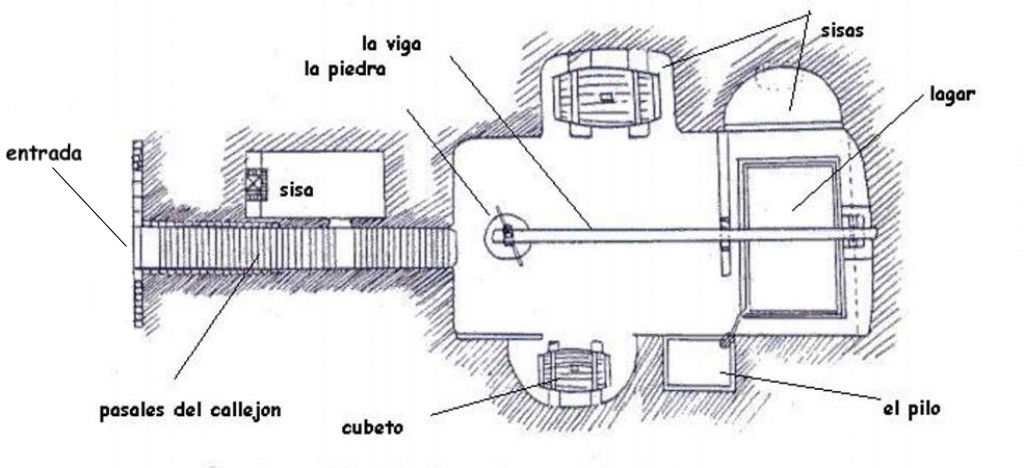
Sketch
of a winery |
|
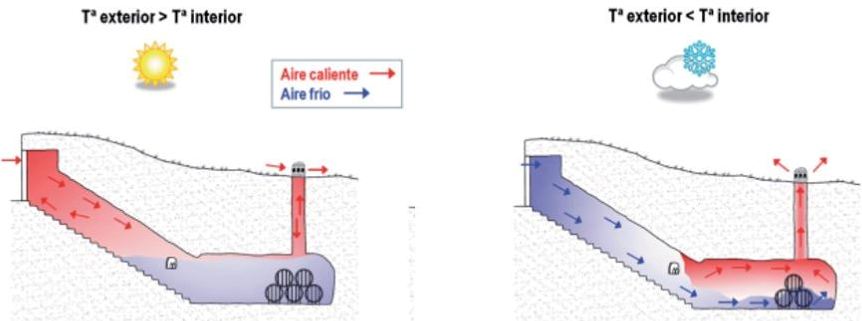
Natural ventilation in
summer (left) and in winter (right) in an underground cellar
with zarcera |
WINE ELABORATION PROCESS
The
classic system of crushing the grapes through the traditional treading
while enjoying the ritual has given way to the use of modern means that
distort this task. Once this is finished, manual pressing is undertaken,
consisting mainly of the "beam", attached at one end to vertical beams
called "pernías" or "guiaderos", and at the other end, by means of a
turned coupling with the thread pitch , the "spindle", fixed to a large
cylindrical stone called "I think", by means of an ingenious system of
wedges. Once the grapes are trodden, they are arranged in a circular
shape on a promontory on which the "commitment" is placed, a circular
wooden platform, to undertake the final crushing. Next, a network of
plugs is formed on the commitment to the name "castle". We begin to
retouch the beam that rests on the castle by means of the "boys" at the
opposite end of the feed. The beam (some up to 15 meters, taking
advantage of large poplars) already has enough inclination and by
turning the spindle, but not before giving it a pat of tallow as
greasing (turned in black wood) we will take off the feed from the
ground at a height prudential, so that it slowly exerts its colossal
force as a counterweight during the necessary days.
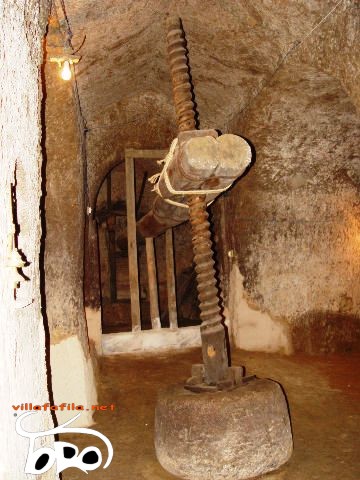
Biga front part with its
spindle |
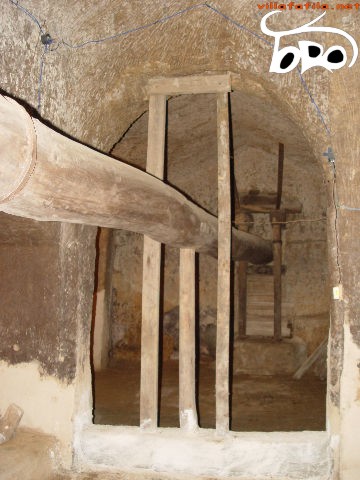
biga middle part |
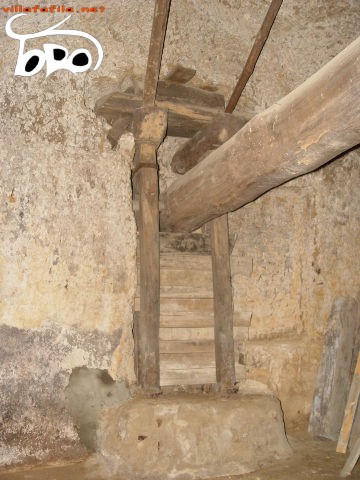
Biga final part |
It is obvious that the
supervision of the slaughter requires the obligatory visits to the
cellar to fill and raise the feed as the beam loses pressure. Collect a
jug of must to make the "mostasí" and enjoy the gathering with the
neighbors, recounting the anecdotes of what happened in the harvest, in
which the "lagaradas" were never lacking.
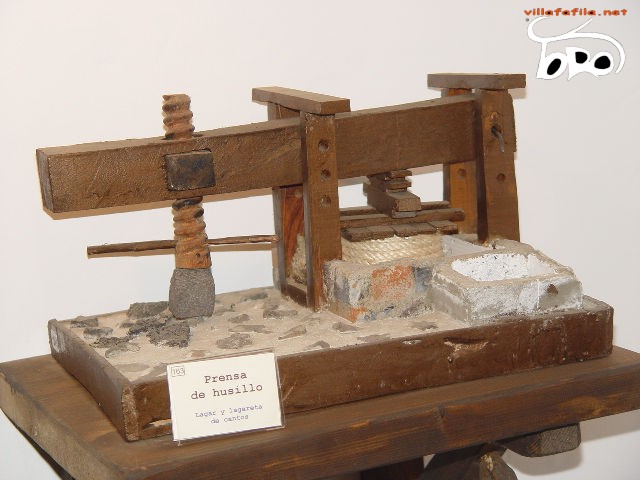
Model of a biga |
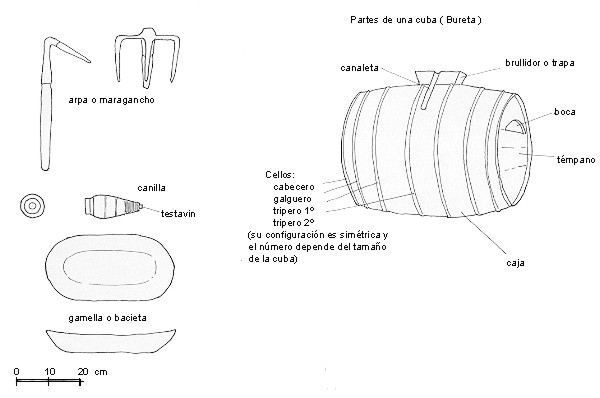
Utensils and parts of a
Cuba |
As the pilo empties, the avid vats
on their “pohinos”, receive the must, starting the alcoholic
fermentation inside, but not without first adding the “mother”. Order
and neatness are returned to the warehouse, with cleaning. We turn the
key and silence returns, her belly is not welcoming. The "stink" of
fermentation can give us an upset.
After a week, having gone down
twice to the middle of the barrel and the lamp turned off, the last one,
its tremulous light, assures us that the “stuff” is not dangerous, there
is oxygen, a sign that the fermentation has finished.
The end is near, with the
"transfer" to the vats that will offer their lap so that mother nature
finishes her mission, we have finished with effort and tenacity a being
with its own life, the WINE.
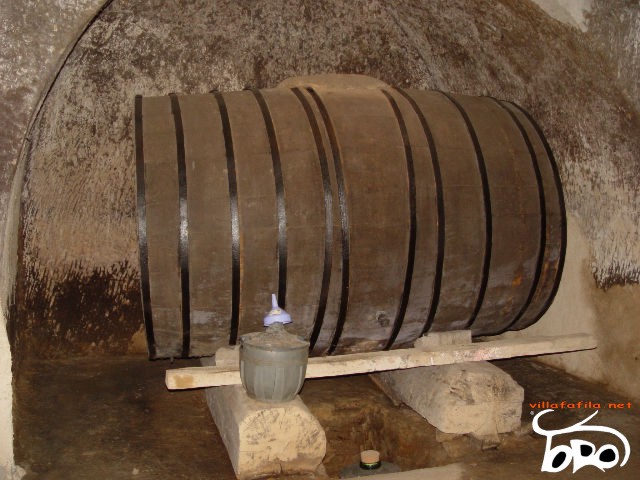
vat for wine |
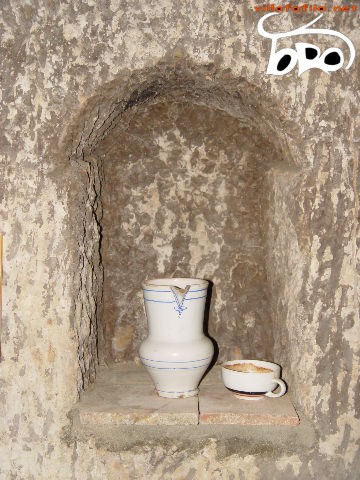
wine jug |
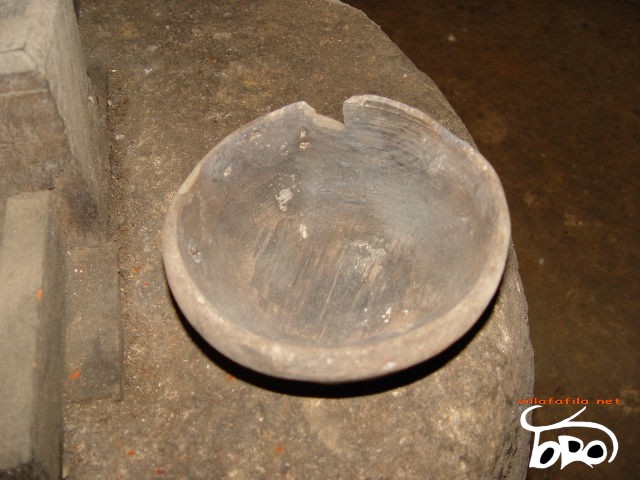
Spigot |
The second part is more
complex. Your consumption and enjoyment. Bearing in mind that great
civilizations: Phoenicians, Greeks, Romans, Cistercian monks, our
grandparents and to this day, there were those who usefully dedicated
part of their lives to cultivation and enjoyed this gift, others
uselessly ruined it trying to resolve their frustrations with he. Let's
be among the first
THE HARVEST
At the end of September the
harvest began, the grapes were collected and later transformed into wine
in the cellars. Some of these were carefully chosen to be hung, in
clusters, from the beams of bread baskets and pantries, for consumption
at Christmas.
It was done between songs that
made reference to local and current events, preferably to the departure
and return of the day.
Lagarada was the culminating
moment of the harvest: a beautiful bunch of grapes was rubbed on the
face, sometimes also on the insides, of the chosen one, poor that young
man who fell into the hands of a gang of grape harvesters! His secrets
were public.
Today the harvest has totally
disappeared, like all the hawthorns that existed in the town, after the
arrival of the concentration in the early 1970s, after loss, the use of
the cellars too, passing to a great abandonment, today the use that is
given is for the realization of snacks between friends.
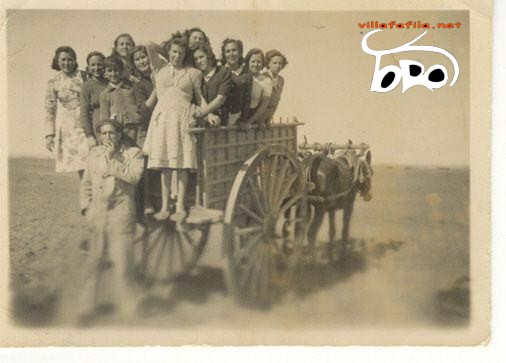
Harvesters going in a cart |
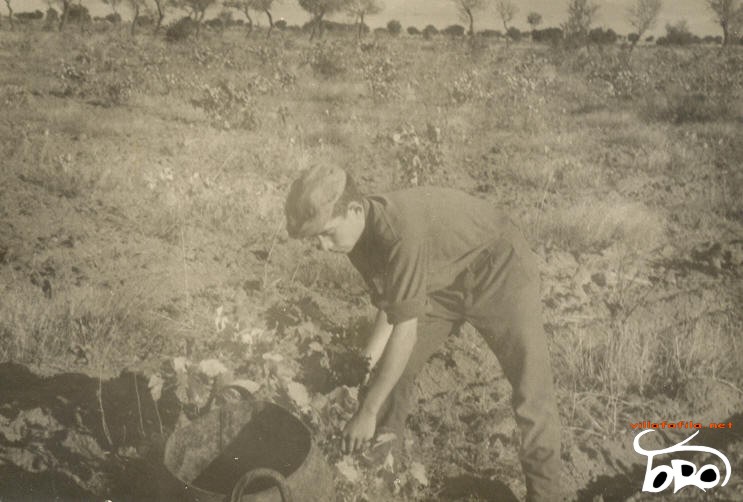
harvesting |
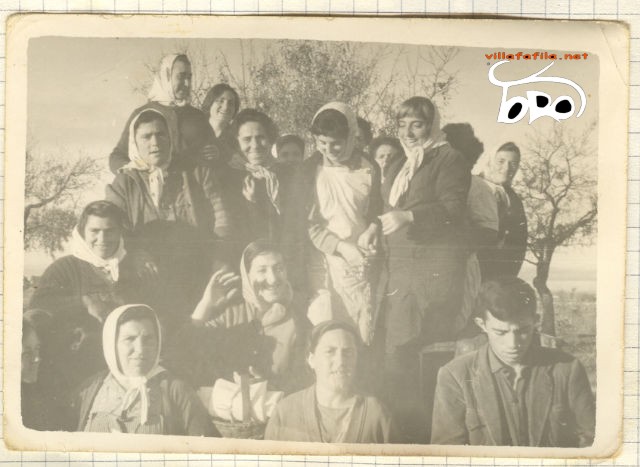
Harvest Group |
With the realization of the
Parcelaria Concentration, in the early 1970s, all the hawthorns were
uprooted, leaving some residual, with this the activity of making wine
was lost, which led to the general abandonment of the wineries, and a
part of them to its disappearance, or to a large extent its
deterioration, a part was always kept by its owners.
Another problem that arose around
the abandonment, as there was less influx around the warehouses, was the
looting and theft that individuals took advantage of to steal materials
such as vats, or spindles, even causing considerable damage to them,
enlarging their disappearance.
In the last two decades, a new use
has resurfaced around the winery, where the hut that has been
transformed into a place for a picnic area with the location of a
fireplace for cooking on the grill, this fact has meant recovering part
of the of those wineries that were in good condition even with a certain
degree of deterioration, which has led to maintaining a good number of
them in a good state of conservation.
|
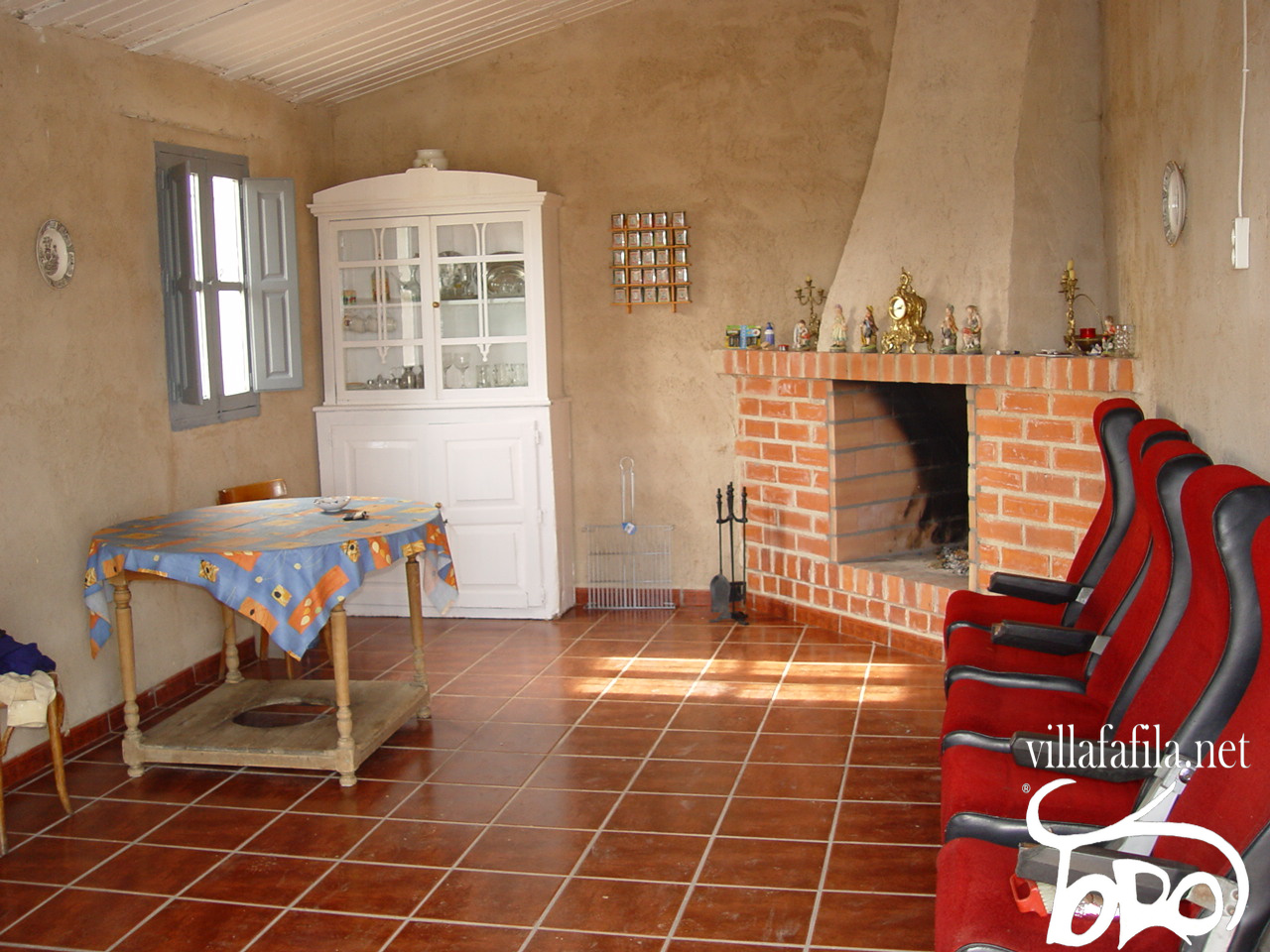
Newly arranged cellar
house with its chimney |
Author:
Jose Luis Dominguez Martinez.
Biography:
Ruiz Mazarron, Fernando; Cid
Falceto, Jaime; Cañas Guerrero, Ignacio “Use of traditional and modern
underground cellars dug into the ground for wine aging”. In:
Construction with earth. Technology and Architecture. Earth architecture
conferences in Cuenca de Campos 2010/2011. [on-line]. Valladolid: Juan
de Villanueva Chair. University of Valladolid. 2011. P.29-32. Available
on the internet:
http://www5.uva.es/grupotierra/publicaciones/digital/libro2011/2011_9788469481073_p029-032_ruiz.pdf
Photographs and maps:
Ruiz Mazarron, Fernando; Cid
Falceto, Jaime; Cañas Guerrero, Ignacio “Use of traditional and modern
underground cellars dug into the ground for wine aging”. In:
Construction with earth. Technology and Architecture. Earth architecture
conferences in Cuenca de Campos 2010/2011.
Javier Fernandez Fernandez.
https://www.google.es/maps.
https://sigpac.mapama.gob.es.
Maps of Plot
Concentration, Agriculture and Livestock of JCyL, of Villafáfila:
https://agriculturaganaderia.jcyl.es/web/jcyl/AgriculturaGanaderia/es/Plantilla100Detalle/1246464862173/ACU/1207034694356/CParcelaria
Jose Luis Dominguez Martinez.
Measurement:
https://sigpac.mapama.gob.es
https://www1.sedecatastro.gob.es/
Transcription and montage:
Jose Luis Dominguez Martinez.
All text, photographs, transcription and montage, the rights belong to
their authors, any type of use is prohibited without authorization.
All text and photography has been
authorized for storage, treatment, work, transcription and assembly to
José Luis Domínguez Martínez, its dissemination on villafafila.net, and
any other means that is authorized. |

